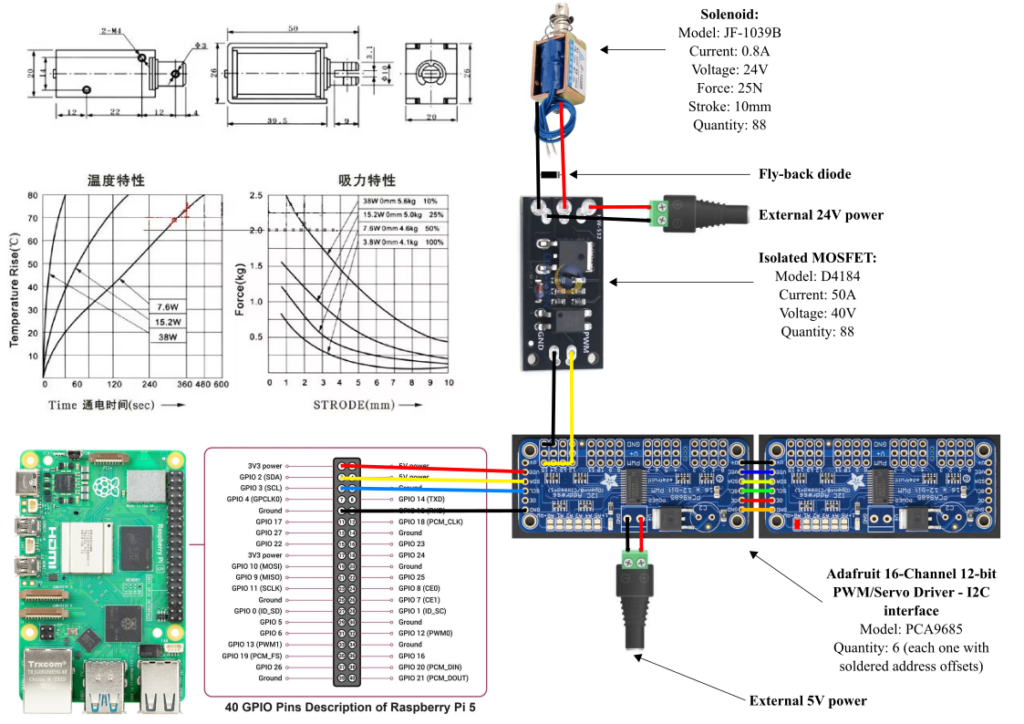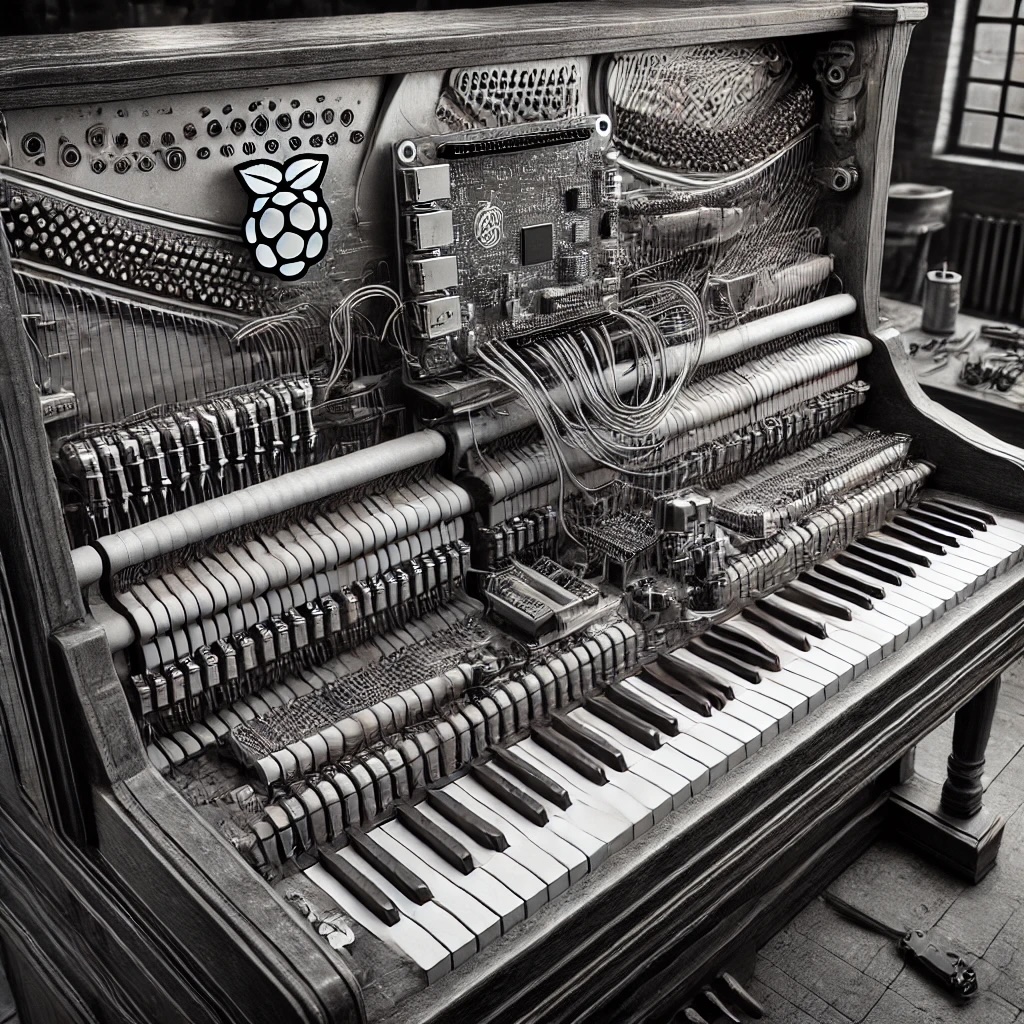Aim
I want to design and build an electronic ‘player piano‘ that is controlled and operated by a Raspberry Pi.
I wish to purchase a second hand, unloved but functional acoustic upright piano and convert this. My preference is likely to be a traditional upright and not nessecarily a player piano with pneumatic key controls.
Exemplars and inspired works
Brandon Switzer
The work of Brandon Switzer (bbswitzer1@gmail.com) and his project ‘Building a Player Piano‘ is popular and has inspired many others to design and build their own player pianos. I have had the idea of a Raspberry Pi piano for years and after researching this and coming across Brandons project, I was inspired to begin my own design.
I am a member of a Discord community which I think was created by Brandon and most of the community use Brandons project as a base to build/modify and tinker with.
This YouTube video shows a quick overview of his build and the fully built piano in action.
Brandon also created a thorough GitHub repository describing the background and detail of the build. In addition to this, I managed to obtain the document below providing more descriptions of the build.
Brandons project, however, is based on the ESP32 and Arduino Pro, both of which I am unfamiliar with. My concern is that if I built his project and then when the inevitable happens and I have problems, I will be stuck.
‘Flower-3D’
I am not sure of the name of the person behind ‘Flower-3D‘ on YouTube (video 1 and video 2), but they have constructed an impressive electronic player piano. The descriptions inform me that it is Arduino based.
Ross Hamilton
I did come across another build and blog by Ross Hamilton, which appears to be the same as Brandons, but with a Raspberry Pi that interfaces with Brandons design. Ross designed and shared designs of his PCBs on GitHub for the driver, power distribution and processor boards.
I like this idea, but as explained above, my concern arrises when things go wrong and I cannot faultfind and fix Arduino/ESP32.
Ramon Yvarra
Ramon Yvarra converted a pneumatic player piano into an electronically controlled pneumatic player piano, by installing electronic solenoid valves to control pneumatics that then interface with the keys in his traditional player piano.
‘Electronic piano players’ (from above the key bed)
likevvii and GotGaMeR on YouTube have both created very impressive ‘electronic piano players’ which sit above the key bed and plays the piano by pushing down on the keys using solenoids.
likevvii video and notes from their video:
– 100khz PWM using PCA9635 chip
– Volume profile for each key to normalize entire piano, does not read midi live due to requirement of parsing the entire song to calculate the correct/normalized power output for each key.
– Overheating NOT possible, low power state after key is pressed for unlimited sustain, also achieved from parsing. Buffer and timestamps added to always be in snyc with original midi file (this version uses delay commands)
Initial design
Bill of materials
88x JF-1039B solenoids sold from Eshinede in Shenzhen, China. These same solenoids are used by Brandon and many other builders. They appear synonymous with DIY electronic player pianos. From Brandon: “The solenoid is 24v and has 25n of force. It’s listed to take 2a but it really only takes 750ma”.
2x JF-1250B solenoids for the foot pedal

